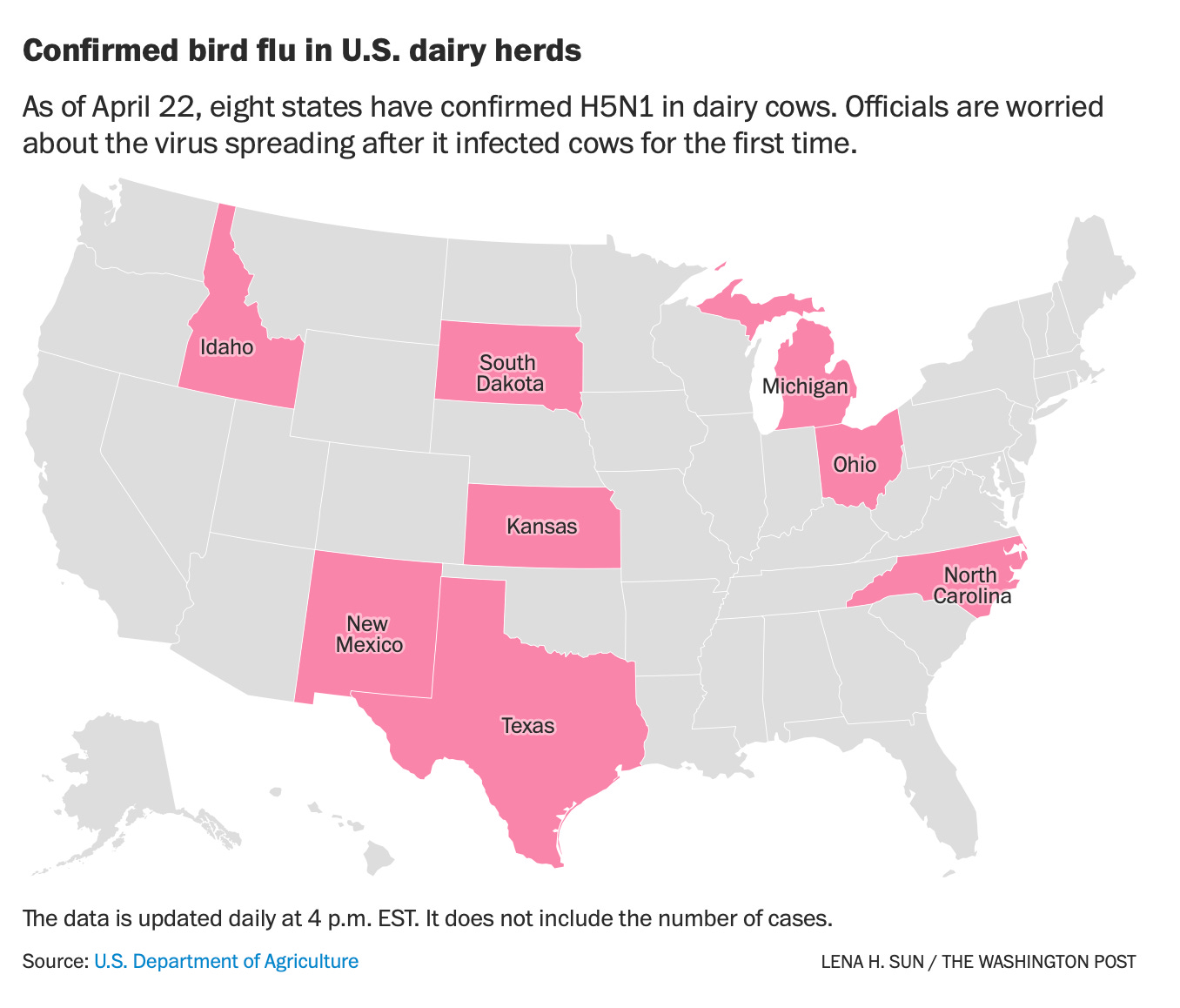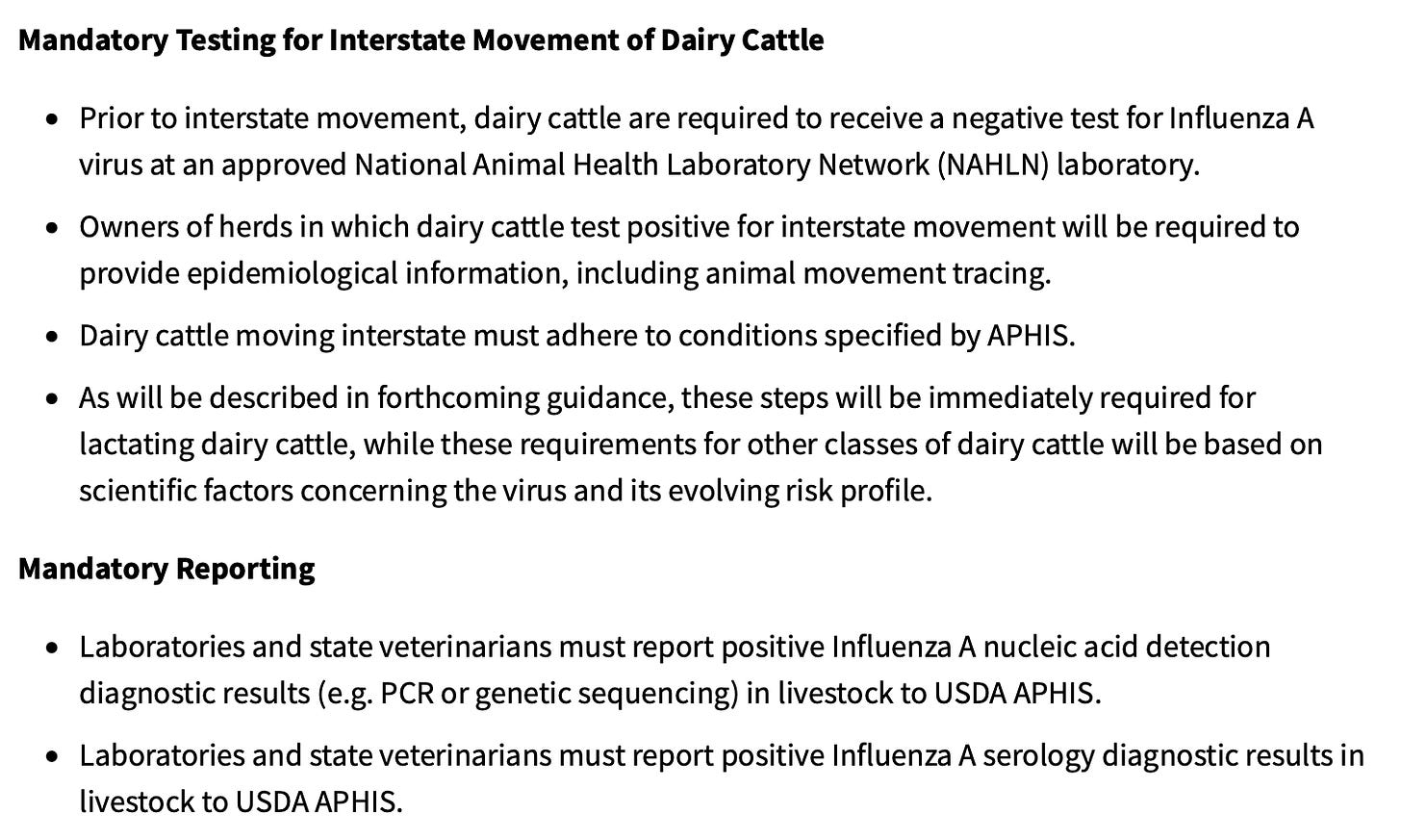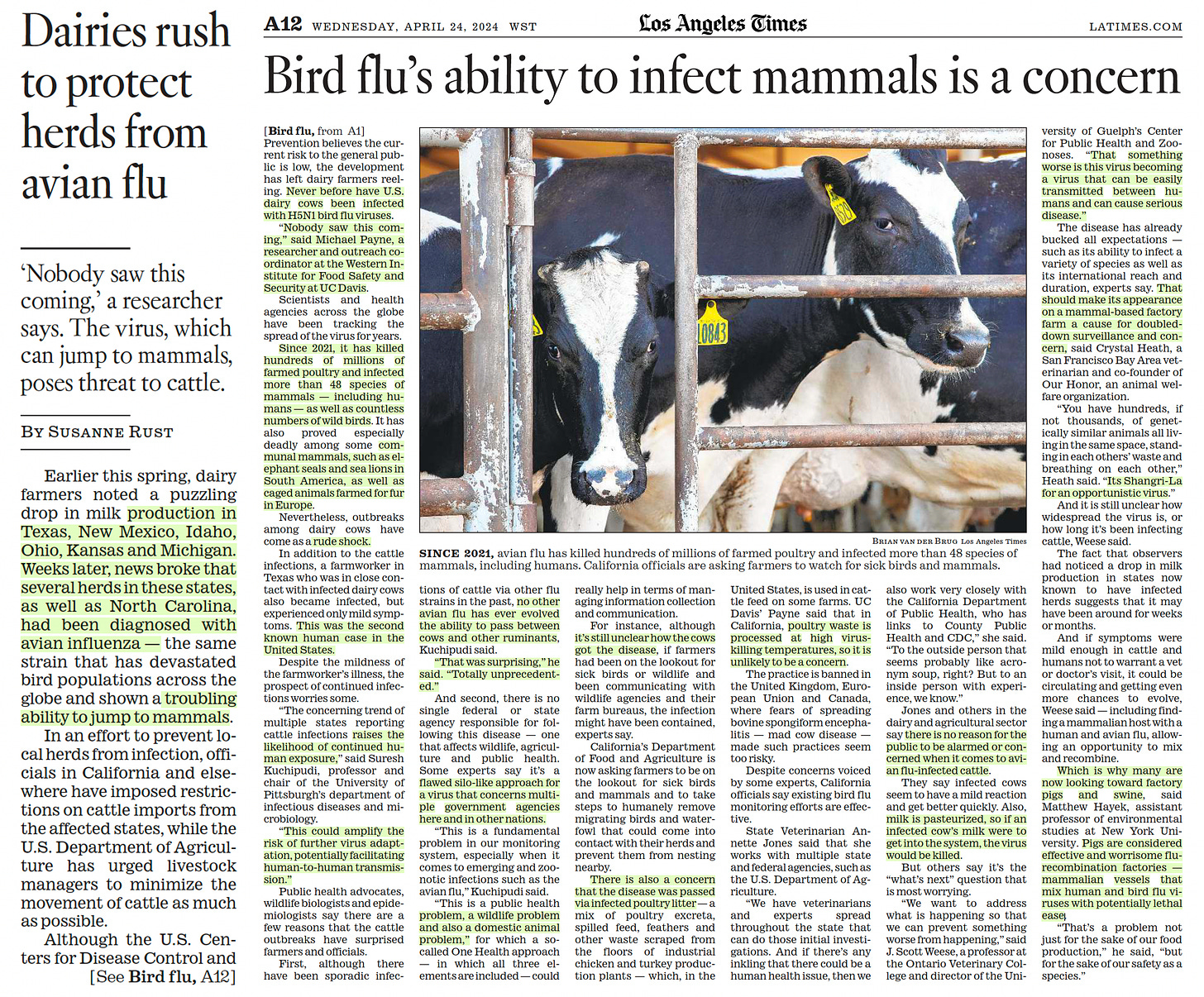A Bird Flu H5N1 Status Report
Updates from a joint USDA, CDC, FDA Joint Briefing Session Today
After weeks of being in the dark, it was good to see these 3 public agencies come together this morning to give a closed briefing (yes, open would have been better) and answer key questions about avian flu spread among cattle.
Here are the key points:
Confirmation of H5N1 infected dairy cattle herds in 8 states. But the FDA report yesterday of commerical milk PCR positivity strongly supports that the cattle spread is far wider than these 8 states. Important to emphasize that (PCR) is testing for remnants of virus, not live virus, which would be unlikely with pasteurization. Other tests, assessing potential evidence for any live virus (egg viability and culture), are to be reported by the FDA going forward. Limited culture tests are all negative to date for any live virus in milk.
From the great work of U Arizona evolutionary biologist Michael Worobey who (heroically) analyzed the 239 H5N1 sequences that were released Sunday night for the first time, it was likely a single initiation of transmission from bird to cows. USDA stated they believe the outbreak in dairy cattle in the US began in late 2023, initially in Texas.
There is confirmation from sequencing of cattle to cattle and cattle to poultry back transmission. Also there is confirmation of asymptomatic dairy cattle with H5N1 infections but the extent of testing is unclear. The cows that have been infected appear to have a mild illness lasting about 2 weeks with discoloration of their milk. More information on the natural history of illness in cows and the proportion who remain asymptomatic are needed. The only documented human case to date was a dairy worker through direct contact that resulted in conjunctivitis.
For the readiness plan in case human transmission does occur, the public officials asserted that Tamiflu would be effective and it has been stockpiled, that gearing up testing would be done and, if necessary, the US could fully shift its annual flu vaccine production to make H5N1 shots at scale. They have 2 candidate H5N1 vaccines in hand that are well matched to the current sequence and there is the possibility to augment vaccine supply via mRNA-nanoparticle production. Nicely summarized by Helen Branswell at STATnews here.
It appears very unlikely, but the more the H5N1 is spread unchecked, the bigger the reservoirs and chances for further functional mutations to take hold. So better to plan for a worst case scenario.
A Federal order was put out this morning to mandate testing and reporting of cattle infected, measures to avoid further spread.
Routine testing of pigs, which is important due to their potential facilitation of spread to humans, has been negative to date. Also to note, data we have so far are based on dairy cattle; little is known or available about beef cattle (which often cohabitate), but occupational exposure notifications have been put out to dairy farms and slaughterhouses.
Although originally posted electronically several days ago, this front page article at LA Times today is a good background summary.
A snippet: “It has also proved especially deadly among some communal mammals, such as elephant seals and sea lions in South America, as well as caged fur-farmed animals in Europe. Nevertheless, outbreaks among dairy cows have come as a rude shock.”
As more information becomes available, I’ll update this post. In the meantime, seeing unity among the public health agencies is a good sign that we’re moving past the “opaque” era of the unprecedented bird to cattle outbreak here and finally seeing forthright communication to scientists and journalists— the way it should and needs to be.
Thanks for reading and subscribing to Ground Truths!
Please share if you found it helpful.







From Katie Ferrari, helpful insights about farmworkers
Hi Eric, thank you for your recent post on H5N1! This coverage is important. I'm writing to urge you to expand on what you addressed in paragraph 3: "The only documented human case to date was a dairy worker through direct contact that resulted in conjunctivitis." Multiple farmworkers have H5N1 symptoms but are not going to get tested for understandable reasons: they are undocumented, rely on the job to support their families, etc. The CDC and other agencies should be mandating and providing tests and—this is most important—paid sick leave, for workers to isolate. If public health officials fail to do this, we are at risk of H5N1 transmission among humans mushrooming. The current approach demonstrates how little the CDC has learned little from the ongoing Covid-19 pandemic.
Thank you for this excellent post! So informative, and an extra thank you to the great article by Helen Branswell! I love her writing and can't afford a subscription to STAT.